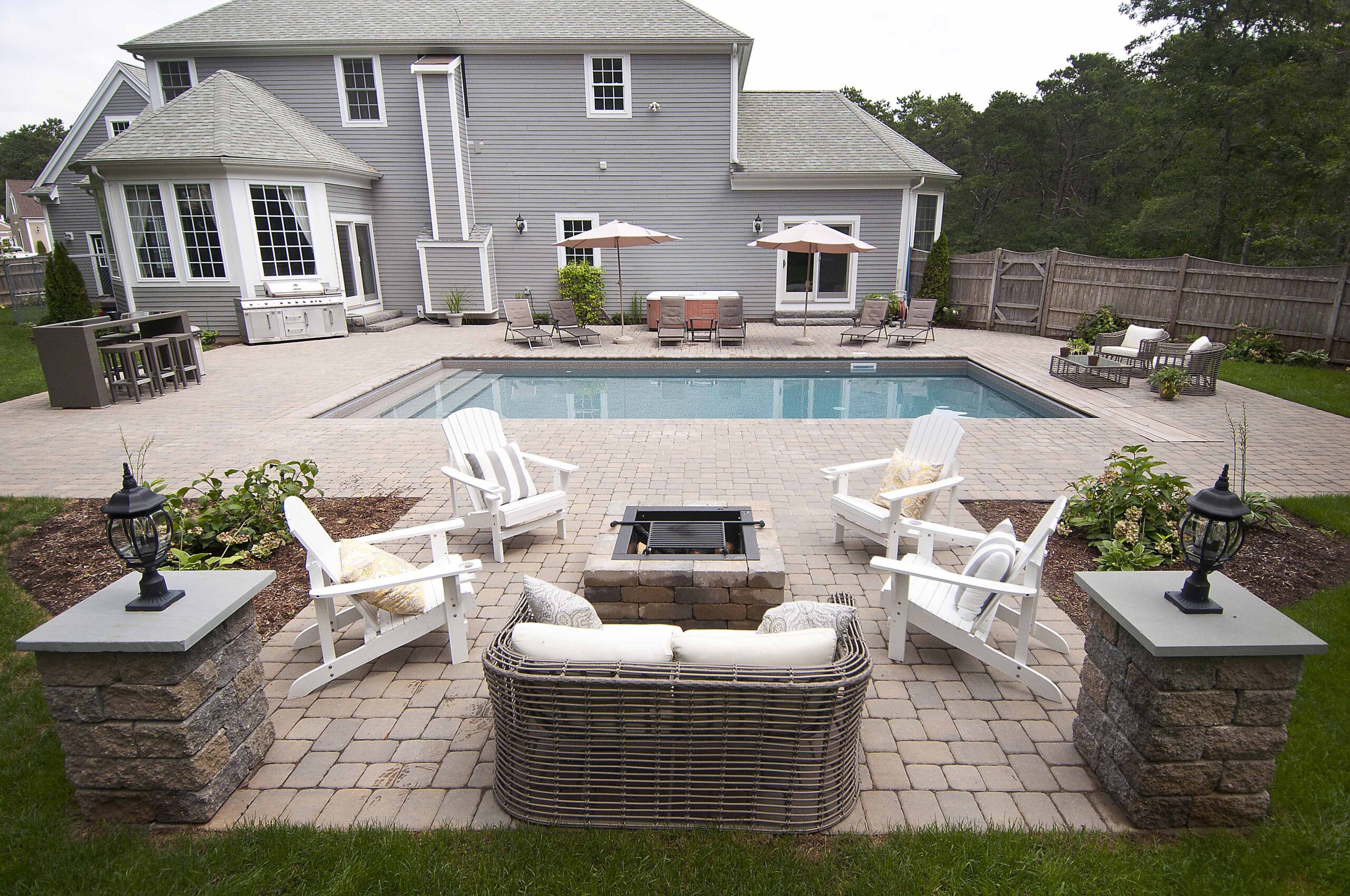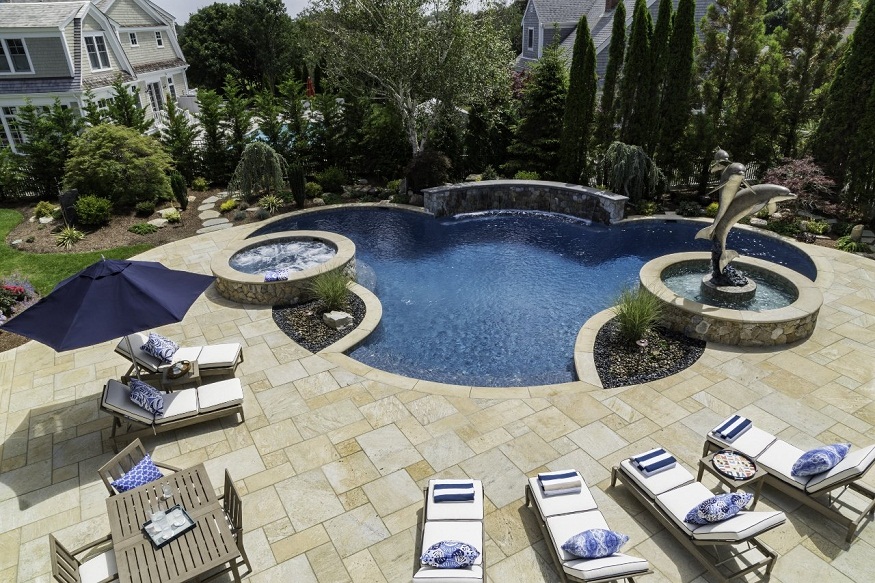Inground pools are a luxurious and practical addition to any home, offering a private oasis for relaxation, recreation, and exercise. Whether you’re envisioning weekend pool parties, tranquil morning swims, or boosting your property value, installing an inground pool is a major investment that requires careful planning and execution. This guide covers the key aspects of inground pool installation, from initial considerations to the final touches.
1. Choosing the Right Type of Inground Pool
There are three primary types of inground pools: concrete, vinyl-lined, and fiberglass. Each has its own set of advantages and drawbacks.
Concrete Pools
- Durability: Extremely long-lasting and customizable.
- Flexibility: Can be shaped into any design.
- Cost: Typically the most expensive, both in initial construction and maintenance.
- Installation Time: Usually takes 8 to 12 weeks.
Vinyl-Lined Pools
- Affordability: More cost-effective than concrete.
- Customization: Limited to pre-designed shapes.
- Maintenance: Liners may need to be replaced every 7-10 years.
- Installation Time: Typically completed within 4 to 8 weeks.
Fiberglass Pools
- Speed: Fastest to install, often within 2 to 4 weeks.
- Durability: Resistant to algae and staining.
- Design: Limited to pre-molded shapes.
- Cost: Mid-range, with lower long-term maintenance costs.
Your choice will depend on your budget, desired aesthetics, time constraints, and willingness to handle ongoing maintenance.
2. Planning and PermitsSite Assessment
Start with a thorough evaluation of your yard. Soil conditions, slope, drainage, and accessibility will all affect the type of pool you can install and the cost.
Local Regulations
You’ll need to obtain the appropriate permits from your local municipality. This typically includes:
- Building permits
- Zoning approvals
- Utility mark-outs
- HOA (Homeowner Association) approvals if applicable
Ignoring these requirements can lead to costly delays or even legal issues, so it’s essential to comply fully with all local regulations.
3. Budgeting
Installing an inground pool can range from $35,000 to $100,000+, depending on the type, size, materials, and features. Consider the following cost categories:
- Excavation and Construction: The bulk of the budget.
- Landscaping: Grading, sod replacement, and decorative features.
- Fencing: Often a legal requirement for safety.
- Utilities: Plumbing, electrical wiring, and lighting.
- Accessories: Diving boards, slides, covers, heaters, and automation systems.
Remember to account for ongoing maintenance and insurance increases.
4. The Installation ProcessStep 1: Design and Layout
Work with a pool designer or contractor to finalize the design. You’ll select the pool shape, depth, and any custom features (like tanning ledges, steps, or waterfalls). This is also when the location is staked out in your yard.
Step 2: Excavation
The ground is dug out to match the shape and depth of your pool. Heavy machinery is brought in to remove soil and shape the hole. This stage can take several days depending on weather and soil conditions.
Step 3: Structural Installation
- Concrete Pools: Steel rebar is installed to reinforce the structure, followed by the application of gunite or shotcrete.
- Vinyl Pools: A prefabricated frame is assembled, and the vinyl liner is installed.
- Fiberglass Pools: A pre-molded shell is lowered into the excavated hole using a crane.
Step 4: Plumbing and Electrical
Plumbing lines are run for water circulation, filtration, and any features like fountains or jets. Electrical connections are made for lighting, pumps, and heaters. All connections must meet code standards and be inspected.
Step 5: Backfilling and Decking
Once the pool structure is secure, the area around the pool is backfilled with gravel or soil. Then, decking materials—such as concrete, pavers, or natural stone—are installed around the perimeter.
Step 6: Finishing Touches
This includes installing coping, tile, and any custom features. For concrete pools, this is when the interior finish (like plaster, pebble, or tile) is applied. The pool is then filled with water, and the filtration system is tested.
5. Safety Features
Safety is paramount with any pool installation. Be sure to include:
- Fencing with self-closing gates (usually legally required)
- Pool alarms
- Safety covers
- Non-slip decking materials
In some areas, automatic pool covers or motion-detecting lights may also be required or recommended.
6. Maintenance and Upkeep
Once your pool is installed, it will require regular maintenance to stay clean and safe:
- Weekly cleaning: Skimming, brushing, and vacuuming.
- Chemical balancing: Chlorine, pH, alkalinity, and calcium hardness.
- Filter cleaning: Backwashing or replacing cartridges.
- Seasonal care: Winterizing or opening the pool depending on your climate.
You may choose to handle maintenance yourself or hire a professional pool service, which typically costs $100–$300 per month.
7. Enhancements and Add-Ons
To elevate your pool experience, consider these additions:
- Heaters: Extend your swimming season.
- Saltwater Systems: Gentler on skin and eyes than traditional chlorine.
- Lighting: LED and fiber optic lights for nighttime ambiance.
- Water Features: Fountains, waterfalls, and bubblers.
- Automation: Smart systems to control lighting, temperature, and cleaning.
These features can significantly improve both the functionality and aesthetic of your pool, although they come with additional costs.
Conclusion
Inground pool installation Carmel is a significant project that combines technical complexity with creative vision. From selecting the right type of pool to navigating permits, budgeting, and safety requirements, each stage demands careful attention. But with the right planning and professional support, the result is a beautiful, functional retreat right in your backyard.
Whether you’re diving in for fitness or lounging poolside with a cocktail, a well-installed inground pool is an investment that pays off in lifestyle enhancement and increased home value for years to come.



